
For the curious sightseer, or unconventional traveler who seeks something besides a fancy restaurant in Paris or Rome, China has the gravity-defying Hanging Temple in Datong City.
Greece has the Meteora Monasteries, balanced precipitously at the top of high cliffs.
But if one is looking for the extraordinary, for something spectacular that is man-made, then a visit to the country of Georgia, in the Caucasus region of Eurasia, simply has to go on the list.
For out of all man-made secret sanctuaries or fairy-tale-like castles built high on top of or inside a cliff face, nothing can come close to the one that Georgians built in the 12th century.
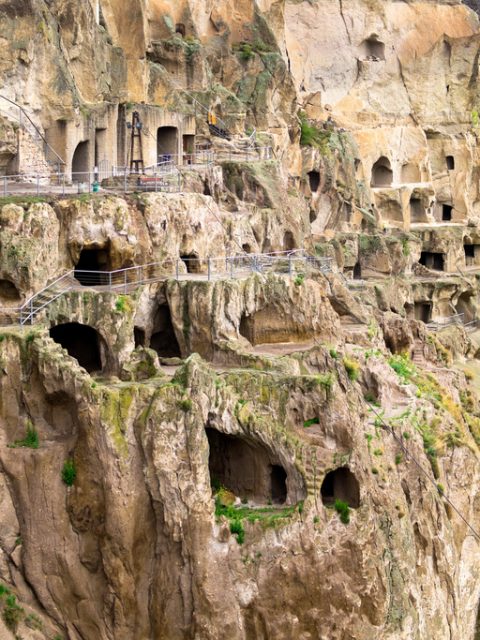
Vardzia is a spectacular historical-architectural museum in Ge0rgia, dating from the late 1100s. Up to 600 rooms are cut in the rock, including a church and chapels with great wall paintings.
A 19-miles drive in the wilderness along the Mtkvari River from the city of Akhaltsikhe in south-west Georgia is more than enough to convince any skeptic about this place’s uniqueness.
The road follows the river through a deep gorge with huge cliffs looming on both sides, and cuts through a particularly lovely wide-open valley filled with castle leftovers, remnants of medieval times cast around on arid, rocky hillsides.
And at the end of it? Voilà! Looking like a gigantic wasp’s nest with hundreds of holes drilled into an enormous rock, Vardzia, the remote cave city in Georgia awaits to greet travelers. It literally takes one’s breath away.
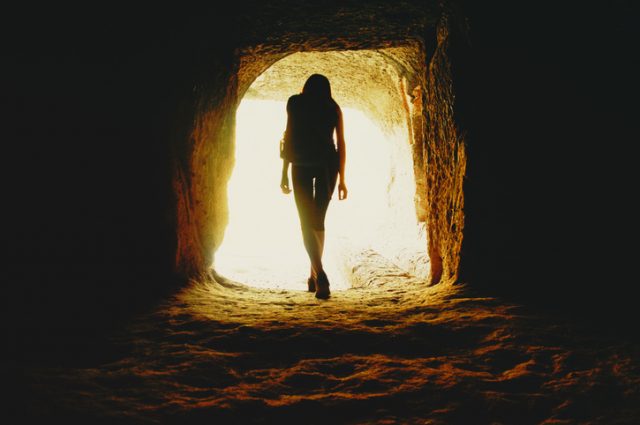
It’s a good idea to take a flashlight when exploring the winding passageways of Vardzia
At least that’s the impression most have about the leftovers of a grand city raised in the late 1100s, right inside the Erusheti Mountains. Excavations carried out in the 1970s showed the Vardzia area and the caves within the mountain were inhabited by humans as early as the Bronze Age, approximately two millennia ago.
The city itself was built over these early human settlements but under desperate circumstances.
Not that people were dying to live in caves underground as cavemen used to, they were dying outside in the open.
Mongol tribes were making an aggressive advance towards Europe during the 12th century, raiding villages, killing everyone who stood in their way. Georgia, sited between the Caspian Sea and Black Sea at the borderline of Eastern Europe and West Asia, was right in their path.
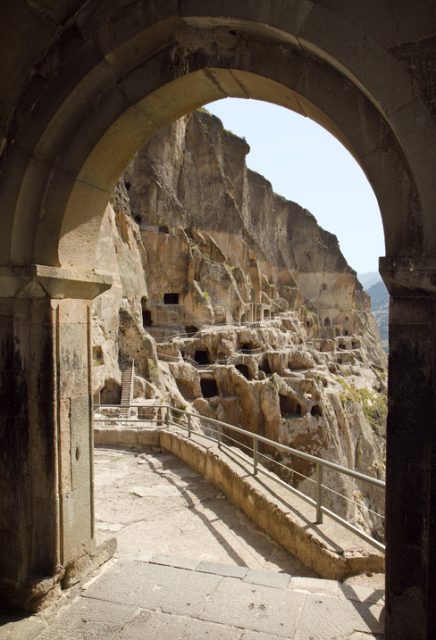
The cave city of Vardzia lies in the Kura (Mtkvari) river gorge, Georgia.
The medieval kingdom of Georgia had been giving their best to resist the onslaught.
But that best was not enough, for King Tamar (the first woman to rule Georgia in her own right, she was given the title mepe, or king, to denote her status) instructed her men to construct a whole new impregnable sanctuary just nearby the town of Apsindza, in the Samtskhe-Javakjeti region of the kingdom.
Sometime around 1185 people began excavating the slope of the mountain and digging tunnels within. In less than two decades, the city was ready.
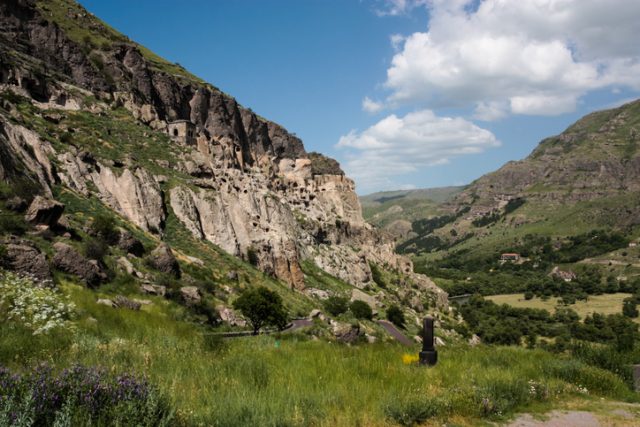
The ancient cave city of Vardzia, in the south of Georgia.
There were up to nineteen levels with countless tunnels and 6,000 rooms in the new refuge, one of which a luxurious throne room and another a huge church right at the heart of the city, meaning it was one built to last and not just as a place where they would hide for a while.
An intricate irrigation system brought fresh drinkable water to all corners of the city, and watered the terraced farmlands outside in the open on the slope of the mountain.

A chapel with some remains of frescoes, inside Vardzia, Georgia.
There were even food storage rooms and wine cellars inside.
The only way in and out of this underground metropolis was via concealed tunnels with the only entrance at the Mtkvari River nearby.
However, as much as it was built to be impenetrable and the natural fortification that the mountain provided made the city hard to be captured or broken into by man, it stood no chance against mother nature.
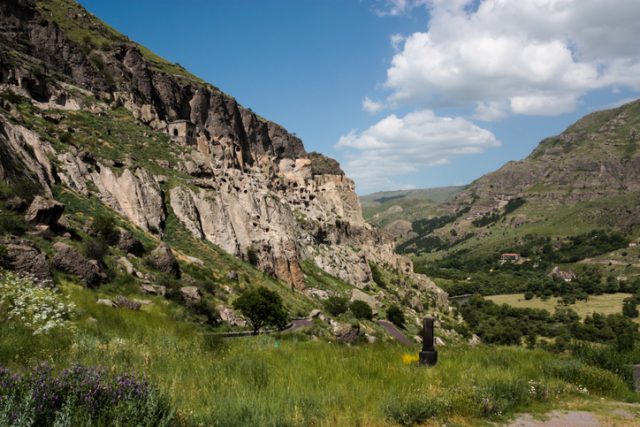
The ancient cave city of Vardzia, in the south of Georgia.
In less than a century after construction began, in 1283, a devastating earthquake shattered the ground and destroyed almost two-thirds of Vardzia. Much of what remained intact was left exposed and vulnerable.
However, the place was not abandoned right away. Monks from all over the kingdom took good care of the remains and kept the monastery up and running until the 16th century. Georgia now found itself under threat from the Ottomans on one side and Persians on the other, each trying to steal territory from the other. In 1551 the Persian Shah Tahmasp I raided Vardzia, killing the monks and pillaging anything of value.
From then on, the place was abandoned completely and left to ruin.
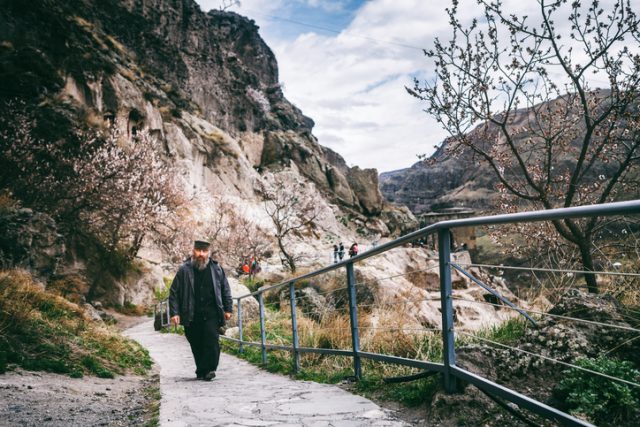
Vardzia, Georgia, April 22, 2017. Vardzia was excavated in the Erusheti Mountain on the left bank of the Kura River, 19 miles from Aspindza.
Vardzia today is only a faded image of the grand city it used to be; nonetheless, it holds special significance to Georgians and brings crowds from everywhere around the world.
Back when it was built for their king, it was supposed to be the easternmost bastion of Christianity. It was for a while.
It stood against the onslaught of the Mongols, but it wasn’t strong enough to hold against a natural disaster.
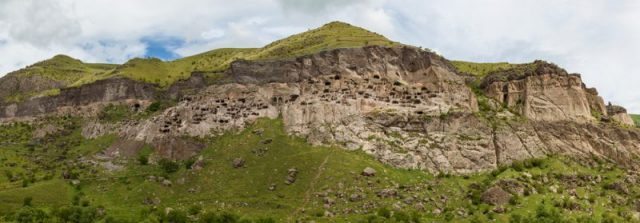
Cave monastery complex in the south of Georgia
There are still 120 cave groups containing approximately 250 rooms standing intact and well preserved, along with six churches including the grand Church of the Assumption.
Aside from that, there are at least 25 wine cellars, containing 185 wine jars hidden in the floor; but while everything else is left to be explored freely by visitors, the wine is not.
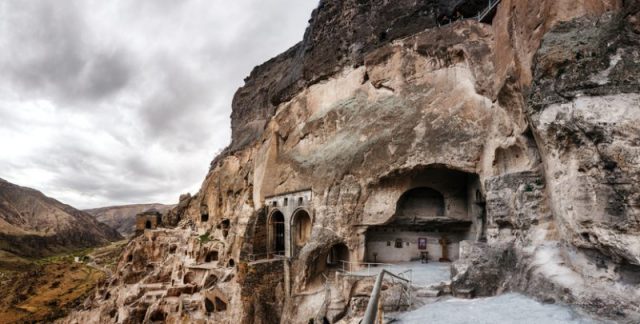
Vardzia can be reached by taxi from the city of Akhaltsikhe. There is also a local marshrutka bus running once daily.
The community excavated Vardzia from the rock to protect themselves and their King Tamar the Great, the most celebrated woman in Georgian history, glorified by the Georgian Orthodox Church as their Holy Righteous, who did everything to protect her people. She left a great legacy behind by doing so–a city unlike any other in the world.
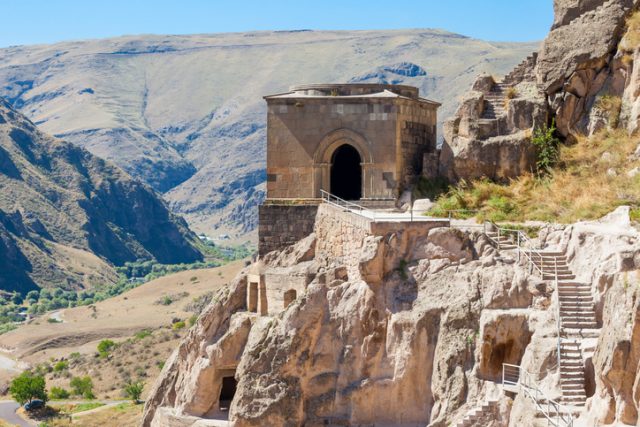
Visitors can explore 13 tiers of the Vardzia cave monastery, with no shortage of steps to climb up and down.
There are without a doubt some spectacular man-made creations on Earth that will fill us with wonder. To see them is a precious gift for the soul to anyone interested in things out of the ordinary.
An entire city stronghold created by a civilization residing at the crossroads of Western Asia and Eastern Europe, built for 6,000 families to live in safety inside a cliff, is definitely one of these spectacular places.
